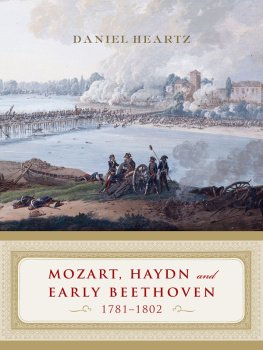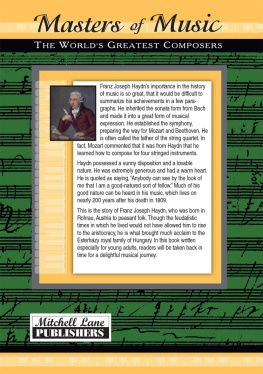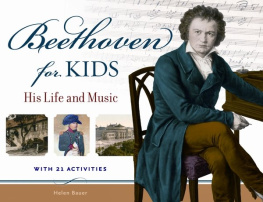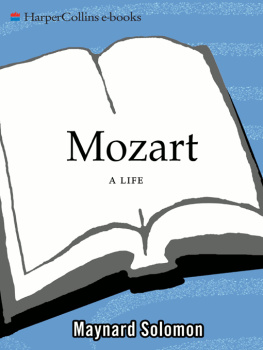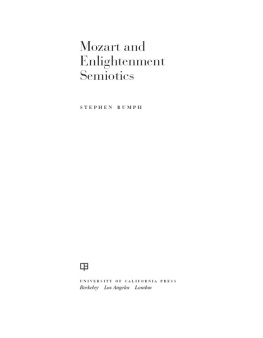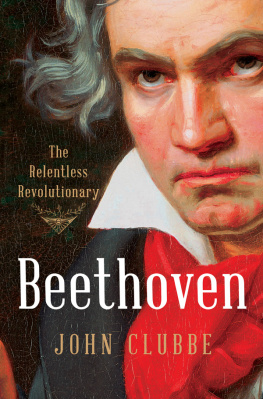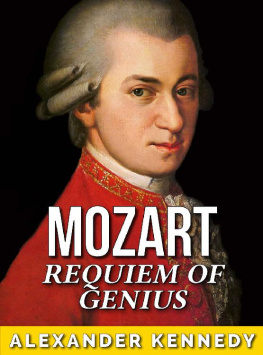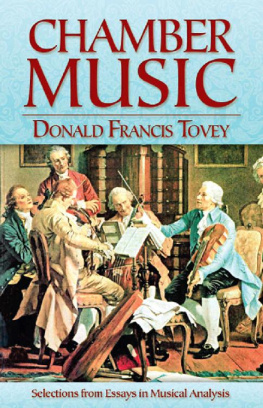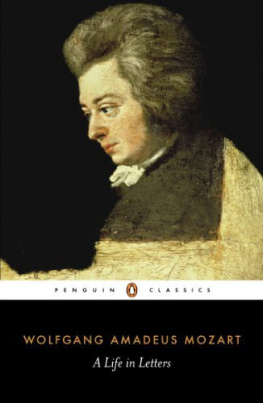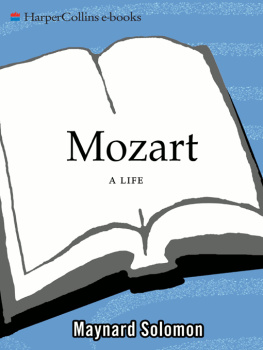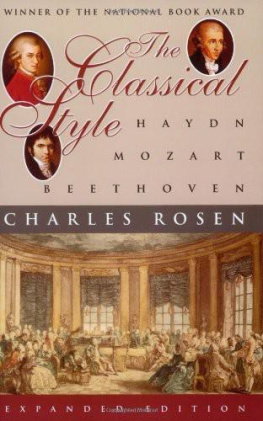

For Bruce
Figures
A N INTRODUCTION to this book is furnished by its two predecessors, Haydn, Mozart and the Viennese School, 17401780 (1995) and Music in European Capitals: The Galant Style, 17201780 (2003). Haydn, Mozart , as it is abbreviated throughout the present volume, concentrated on music in Vienna from the mid-century on, then described the careers and works of both masters up to the turning point of 1780, after which they gradually emerged as leaders of the Viennese school. Music in European Capitals cast the net more widely and surveyed the art all over the Continent, beginning with the Galant Styles origins in newer streams of Italian opera during the 1720s and 1730s. In the Preface to Haydn, Mozart , I expressed hopes of being able to finish the third volume that would wind up the careers of Haydn and Mozart, describe Beethovens first decade in Vienna, intertwined with the tumultuous times surrounding the French Revolution... Behold the third (and final) volume. The story of how three books emerged out of an originally planned one is told in my essay A Pilgrims Progress Report Concerning Music in the Classic Era, in Music, Libraries, and the Academy: Essays in Honor of Lenore Coral , ed. James P. Cassaro (Madison, WI, 2007).
Completing this volume took less time than anticipated, thanks partly to habits formed and momentum gathered from writing the first two, also because the material was more familiar to me. The high classic style in music that marked the last two decades of the eighteenth century became manifest in an imposing succession of undisputed masterpieces. During the 1780s Mozart wrote his most famous operas and instrumental pieces. Haydn followed by producing his greatest symphonies, string quartets, masses, and oratorios. Young Beethoven started as a pianist-composer in imitation of Mozart, on whose keyboard sonatas and concertos he patterned his own. Haydn, as well as Mozart, furnished the models when, about the year 1800, Beethoven began composing string quartets and symphonies. The majority of all these great works were old acquaintances of mine. I have been teaching them in the classroom for half a century.
By the early years of the nineteenth century, Haydn, Mozart, and Beethoven had become a watchword, a commonplace expression signifying musical excellence. From Vienna, the fame of these composers spread rapidly throughout Western civilization. A survey of music journals in 1804, cited by Thayers Life of Beethoven (revised and edited by Elliot Forbes [Princeton, 1964], p. 361), claimed that critics even then ranked Beethoven as the only musician worthy to stand beside Haydn and Mozart. Many music lovers never relinquished their preference for early Beethoven, although the composer himself moved on to other models and different quests. Their attitude certainly had to do with an abiding love for the music of Mozart and Haydn. E. T. A. Hoffmann was one critic whose tastes did move on, by rejoicing in what was specifically new in nineteenth-century music of all kinds, yet at the core of his aesthetic values there remained the same composer-triad: Haydn, Mozart and Beethoven have evolved a new art... he wrote in 1814. Ten years later a group of Austrian notables imploring Beethoven not to desert them went so far as to tout Viennas holy Trinity in the persons of Haydn, Mozart, and Beethoven.
Readers familiar with the first two volumes may notice that this one lacks color plates, a decision I reached for the following reasons. Of great paintings that could enhance main points in my text I found none. As for colored portraits of the main figures, there are hardly any that have not been reproduced often in other books. The unfinished portrait of Mozart at the keyboard by his brother-in-law, the actor Joseph Lange, reproduced over and over in the literature, springs readily to mind. My search for pertinent and unhackneyed visual material yielded better results among engravings and other black-and-white originals.
In one case, I struck a bonanza. An engraved, little-known map, Die Gegend um Wien (The Environs of Vienna), serves as Figure 1.1 and as endpapers. Franz Johann Joseph von Reilly (17661820), Austrias most eminent cartographer, published it in 1789. The map can be read by regarding its center, WIEN, the city within the old walls, as the hub of a wheel, whose spokes radiate out into streets and districts. From the top descending counterclockwise, Reilly labels these: Leopoldstadt; then across the Danube canal to Rossau; Waringergasse, where Mozart lived in 1788; Alstergasse, where Beethoven resided during his first years in Vienna (179295); and so on down to Mariahilf. Just below the last-mentioned is Gumpendorf, where in 1796 Haydn bought the house in which he died in 1809. Beyond the outer line of fortifications to the west and south of the city are numerous villages and small towns that were summer havens to city dwellers. The names of several villages near Vienna are familiar particularly in connection with Beethoven. Starting at the Danube north-northwest of the city and moving southwest there are, for example, Nusdorf, Heiligstadt, Dbling, and all the way south to the town of Mdling near the maps bottom. Further south beyond Mdling is the spa town of Baden, frequented by Mozart and Beethoven. Routes lead out of the city in all directions. To the east, the Landstras[se] becomes the Strasse nach Ungarn (Hungary); to the north, across the Danube, the route to Silesia and Poland diverges from that to Bohemia; to the west lies the Strasse in das Reich (Germany); and in the south there are routes to Styria (and Italy) and to Croatia. Tree-lined royal ways (Alees) lead to Schnbrunn and Laxenburg palaces. The river Wien (Wien Fl[uss])) in those days was uncovered except for the many bridges over it.
John Rice acquainted me with Reillys 1789 map many years ago when he was writing his dissertation here. I somehow managed to keep a copy (among hundreds of other documents) and reminded John of it last year. He knew not only the map but also the identity of a specialist dealer with whom he put me in touch, and from whom I purchased the original engraving reproduced here. As the map leads off the book, so should John lead the list of those thanked in the acknowledgments that follow. He has been one of my most frequent correspondents and of great help with all three books. Another Mozart scholar for whose answers to many queries I am grateful is Paul Corneilson. My colleague Joseph Kerman has been generous in aid of the Beethoven chapter, as has William Meredith of the Beethoven Center at San Jos State University.
Colin Slim, my near neighbor in Berkeley these last five years, has helped me in many ways. He read the entire work in draft before it went to the press and suggested innumerable improvements and emendations. He has also volunteered to help with the proofs when they arrive. His devoted friendship has sustained me through occasional bouts of dispiritedness and kept me focused on the goal.
I have had but one research assistant, Rebekah Ahrendt, who alone accomplished the feat of putting the entire text on disk over a period of four years as I was writing it (and often rewriting it), all the while making valuable suggestions and corrections. She did this so adroitly, with so much grace and aplomb, as to make the task look easy. I thank her heartily, and also my music typographer, who once again was Michael Zwiebach. My friend, the artist Carol Peale, drew the map of the Rhineland (Figure 7.1) after a rough sketch I made, and together we looked through her vast collection of art books and catalogues until we found an ideal battle scene with which to adorn the dust jacket.
Next page
